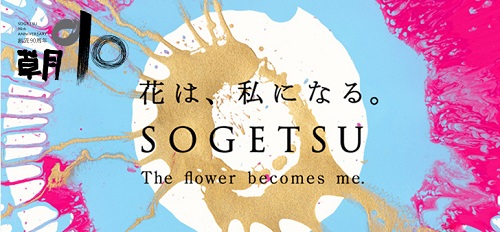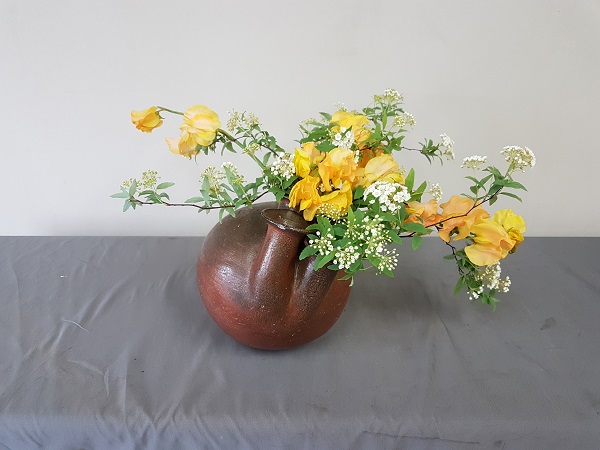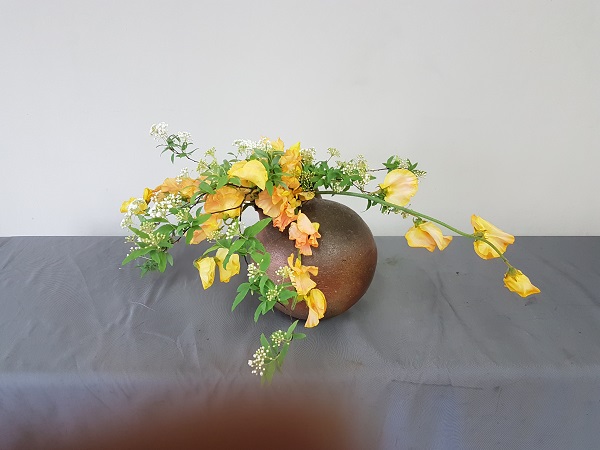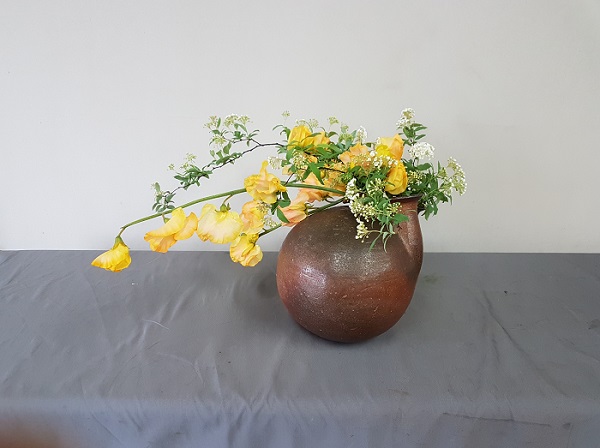
The object of this lesson is to create arrangements suitable for those occasions when people gather around a table, often a dinner table but not always. Normally the arrangement is placed in the center and should suit the size of the table. If people are seated around the table, the maximum height should be about the distance between one’s elbow and fingertips. (Lanky people get more leeway.)
The various elements of the arrangement and the table setting ought to be in harmony and attractive from all angles. However, heavily scented flowers are best avoided. Ideally, if successful, the arrangement should spark conversation. Although, if you’re Japanese or a student of ikebana, you’ll understand that it’s necessary–good manners–to offer comments.

In this instance Sensei wasn’t keen on my choice of container. Still, I saw the opportunity for creating something that was asymmetrical from each point of view with this beautiful ball and its multiple throats.

Each day I was given a packet of branches and flowers ordered for the lesson without any input from me. Though normally quite fragrant, these sweet peas had no scent, and the number of spirea branches used so few as to have no negative affect on the viewer.

In English, Sogetsu School’s tagline reads: The flower becomes me. Google Translate renders the Japanese as Flowers become me. A difference of some significance if one is inclined to dance on the head of a pin.

However, I often wonder whether that’s freighted with cryptic nuances dependent on oblique references to ancient poems.
In English, the flower might turn into me, grow into me, or convert to me. Or it could suit me, fit me, and flatter me. Or does it express me; revealing something of my being and what I am becoming?
The longer I study the art of ikebana, the more frequently I consider these questions.
